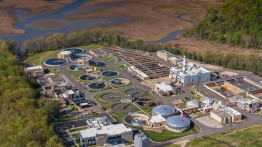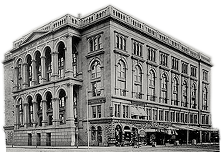Shannon Spence CE'96
As an undergraduate at The Cooper Union, Shannon Spence was part of what her younger colleagues dubbed the Geriatrics Club: transfer students in their 30s and 40s who’d returned to school. There was a man with a photography degree from NYU, a woman who’d studied philosophy and came to Cooper for mechanical engineering. Another graduated from community college. And then there was Spence, a mother in her mid-30’s who had worked for ten years as an electrician on construction sites around New York City.
“It was pretty much exactly what you’d expect,” said Spence about the sexism she faced as an electrician. The ageism of her younger Cooper cohort was comparatively small potatoes. Plus, her classmates were as she put it, “so smart” and some professors were particularly supportive. She recalls Professor Constantine Yapijakis letting her bring in her son when she couldn’t find childcare.
Spence had arrived in New York from Oregon years before to attend the High School of Music and Art. It was her mother who’d suggested she attend Cooper, but she flatly refused. “There’s no way I’m getting in.” But her mother persisted until Spence applied. She was accepted as a transfer student from Queens College. At Cooper, she led the school’s chapter of Society for Women in Engineering (SWE), starting a program to teach children at a local elementary school some basic engineering concepts like stress and strain. The program, a forerunner of Cooper’s extensive outreach programs, proved so successful that it became a regular part of the school’s curriculum.
“I have only a bachelor’s degree, and I’ve had a fantastic career. That’s possible without going to graduate school. I’ve learned so much on the job and from mentors in the field.” Spence herself makes a point of mentoring women navigating a field that is still largely dominated by men. She offers a case in point of the sorts of challenges young women face, ones that look minor but speak to engrained power structures. A young female engineer in her company finds that she is regularly assigned to act as secretary at meetings, a post that men aren’t asked to fill. Spence provides a strategy for getting around the slight and points out that she and other women have a right to be in the room as full colleagues and operate in ways that speak to their skills. “I remind them that they don’t have to do everything just like the men do.”
After graduating, she worked for 10 years for Malcolm Pirnie, a major water and wastewater engineering design firm with clients like the New York City Department of Environmental Protection. She designed control systems for water and wastewater utilities. After September 11th, a national bio-terrorism act, the Frist-Kennedy Bioterrorism Preparedness Act of 2001, mandated that municipalities do vulnerability assessments to ensure, among other critical facilities, the water supply systems. Spence became an expert in the area and has helped write some of the national standards on keeping water supplies safe.
Now at the Prince William County Service Authority in Virginia, Spence is director of the Project Management Office, which oversees the Service Authority’s Capital Improvement Program (CIP). The Service Authority is a combined utility, meaning it is responsible for distributing drinking water for the area’s half million residents and collects and cleans the county’s wastewater.
Besides managing contracts with engineering and design consultants, construction contractors and others to maintain existing water and sewer assets and to put new ones in service, her office manages large CIP and maintenance projects, $100 million a year worth of work. Their largest project, costing $200 million, is a design-build rehab of the Service Authority’s advanced water reclamation facility, which processes 24 million gallons a day. One of the project’s biggest challenges is keeping service going while overhauling a massive facility.
“People need to understand that there is no water factory!” Spence says, pointing out that a surprising number of people don’t realize that water is a finite resource. “It’s an awesome challenge because you’re dealing with water that comes in with any number of pollutants—microfibers, chemicals—and it must leave our facility absolutely clean. Storm water that infiltrates our pipes, and sewer water: it all comes into the same place. Our ability to control the process is absolutely critical.”
Essential to Spence is her role as a steward of the area’s wetlands since her plant’s effluent is released into an estuary of the Chesapeake Bay. Raised in a household that believed in the fight for civil rights, she and her fellow civil engineers (“some of the most mission-driven engineers I’ve seen”) are focused on issues of environmental justice.
“We’re seeing the impact of poor water management in places like Flint, Jacksonville, Detroit. It’s an ecological crisis. In my role I am trusted to do this critical work for my community. I hope young graduates know that their work can bring about greater equity for all stakeholders in the community. It’s not a part of engineering that we often hear about. But it’s critical.”
Click here for a video of Shannon speaking about W.O.W (Women of Water).








